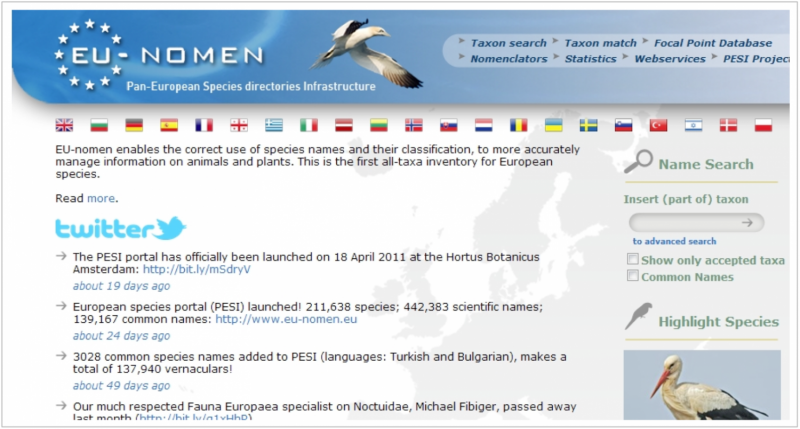Pan-European Species-directories Infrastructure: Basis for handling big taxonomic data

Looked down on with scepticism by many taxonomists, handling big data efficiently is a huge challenge that can only be met with thorough and multi-layered efforts from both scientists and technological developers. Projects like the Pan-European Species-directories Infrastructure (PESI), started in 2009, prove that harmonised taxonomic reference systems and high-quality data sets are possible through dynamic, expertly created and managed online tools. The methods, results and future prospects of PESI are available in the open access Biodiversity Data Journal.
With environmental changes occurring at an unprecedented rate around the world, biological communication needs to be left off the pace at no point. Phenomena such as species' migration, extinction, intrusion; ecosystem stability; decline of pollinators and pest invasion have to be monitored closely and identified momentarily. In order to do so, proper identification based on reliable and easily accessible data is crucial.
Therefore, the three key objectives of PESI include standardisation in taxonomic reference systems, enhancement of the quality and completeness of taxonomic data sets and creation of integrated access to taxonomic information. The five pillars of biological community networks, Zoology, Botany, Marine Biota, Mycology and Phycology, have been integrated in five infrastructural components: knowledge, consensus, standards, data and dissemination.
As a result, PESI did not only merge data from a range of sources and published a total of nearly 450,000 scientific names online. It also maintains networks of outstanding experts and national focal points, so that it makes sure that the taxonomic information, it relies on, is always at its finest, while simultaneously takes care about delivering persistent standards and easily accessible up-to-date biodiversity data.
PESI results will also feed as an essential part for the advancement of relevant EU projects, such as Building the European Biodiversity Observation Network (EU BON). In the EU BON project, the PESI Backbone will be advanced to satisfy the needs of the GEO BON / GEOSS system, also serving as a taxonomic backbone for the projected EU BON Biodiversity Portal.
Aiming at standardisation and integration of taxonomic data across platforms PESI also works in close collaboration with other relevant projects including GBIF, LifeWatch, the Catalogue of Life, the Encyclopedia of Life, the Global Names Architecture, GÉANT, ViBRANT, OpenUp!, BioVeL, iMarine , EU BON and BiodiversityKnowledge .
"Scientific names are key carriers of biodiversity information. Therefore, for the efficient exploring and integration of biodiversity data, the development of a functional taxonomic resolution system, including the establishment of a shared taxonomic standard (as a core component), is essential for all sorts of biodiversity assessments. PESI provides such an infrastructure for Europe, integrating the relevant technical (informatics) and social (knowledge & users) networks into a common work program, serving a wide community of biodiversity workers," says Dr. Yde de Jong, coordinator of the Pan-European Species-directories Infrastructure (PESI) project.
"The PESI Taxonomic Backbone serves as a taxonomic data standard resource, facilitating and optimising the integration and sharing of European biodiversity data, supporting a wide range of European services, major biodiversity programs and stakeholders on nature conservation and biodiversity management," conclude their results the scientists.
More information: de Jong Y, et al. (2015) PESI - a taxonomic backbone for Europe. Biodiversity Data Journal 3: e5848.DOI: 10.3897/BDJ.3.e5848
Provided by Pensoft Publishers



















